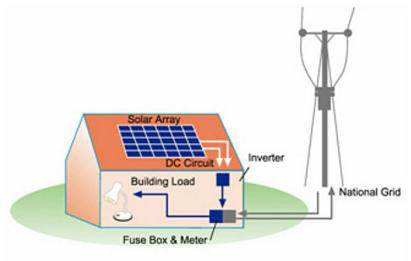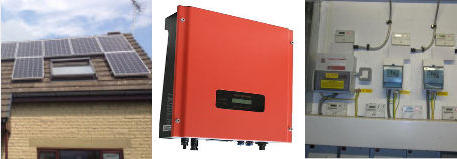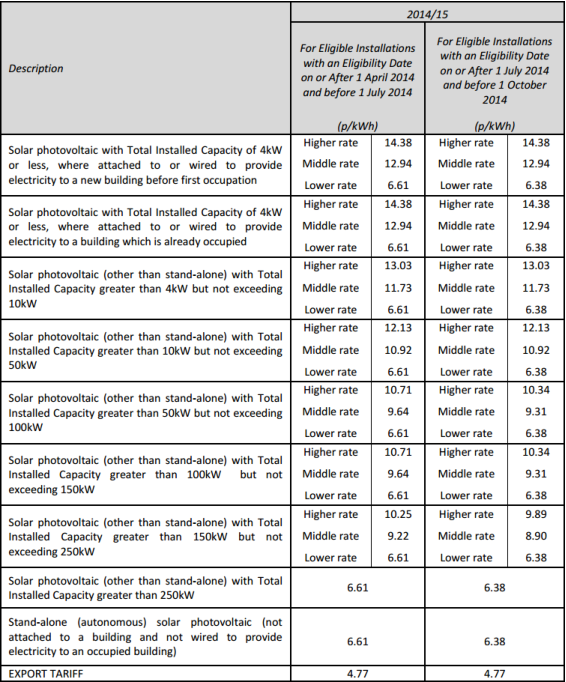




DalesRenewables
Electrical, Heating & Plumbing Contractors
Solar PV Systems















Feed in Tariffs
We will maintain the most up to date FiT tariffs here

Photovoltaic (PV) cells convert radiation from the sun into electricity. A
typical PV cell consists of a wafer of semi-conducting material, usually
silicon, manufactured with two electrically different layers. When
sunlight hits the cell it excites the electrons within the silicon, creating
an electric field across the layers and causing a flow of electricity.
1. The Solar PV modules are mounted to the roof.
2. During the day the PV cells within the modules convert sunlight into
DC (Direct Current) electricity.
3. The DC electricity enters the inverter which converts the DC
electricity in to AC (Alternating Current) electricity.
4. The AC electricity is then sent to the main distribution board for use
in the building.
5. When more electricity is generated than is required by the house, the
excess electricity will be ‘spilled' in to the local electricity grid.
The solution comprises of 3 main pieces of equipment: The Solar PV
array, the inverter (the size of a shoe box which is normally placed in
the loft), and a visual display to monitor how much electricity is being
generated.
The installation of a Solar PV system usually takes 1-3 days. It consists
of:
a) Removing the necessary tiles/slates/other
b) Fitting the railing
c) Bolting the array to the railing
d) Installing the inverter
e) Installing the fuse switch off
f) Setting up visual display
g) Cabling and wiring
Choosing the right site for your Solar PV array is the most important
decision you will make throughout your installation. Location plays a
vital part in its performance and efficiency of a Solar PV system so it is
important to choose just the right spot.

Solar PV Basics
Case
Studies














